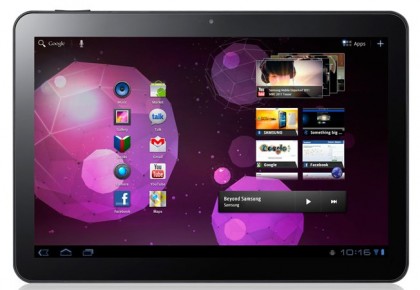
The latest incarnation of the Samsung Galaxy Tab will go on sale this Thursday, marking the launch of the first 4G LTE tablet in the US. Part of me wants to run out and buy it. It’s Android with a 10-inch screen, which matches my personal tablet requirements, and I live in an area with great LTE coverage. Unfortunately, as much as the idea is tempting, the data plans aren’t. I’d be paying $30/month for a measly 2GB plan (even though I already pay that amount for 4G data on my phone), and it would go up to $50 and $80 for 5GB and 10GB respectively. That’s just not in my budget. And I’m not alone.
IDG analyst Bob O’Donnell told Computerworld earlier this month that 3G tablet sales are suffering. According to O’Donnell, “hundreds of thousands” of the devices are still sitting unsold. Research also shows that the large majority of traffic from tablets is over a Wi-Fi connection. I gained access to stats from Limelight Networks recently (disclosure: I do contract work for Limelight) showing that when users watch video on tablets, they access the highest bit-rate streams more often than not. Higher bit rates mean Wi-Fi, not mobile broadband.
The latest Galaxy Tab sounds great on paper, but unless carriers lower their data pricing, or at least let users share data plans across multiple devices, I don’t know how much demand there can possibly be. Mobile broadband is just too expensive.
Odd, I thought consumers were more stupid than that. Huh…
Seriously, people have JUST gotten used to the idea of paying $100/mo per adult for their smart phones on top of their cable and other bills. The idea that ordinary people have the kind of disposable income to absorb another significant monthly charge that costs thousands over a two year contract was obviously doubtful. I assume the computer companies learned this a while ago when they offered cellular equipped netbooks.
Certainly a tablet is SLIGHTLY more portable than a netbook, but not by much. How many people seriously carry one around with them during the day when they’re not at work, and not traveling?
I currently pay a tethering charge for my iPhone and use it when I need it to access the internet on my iPad or a laptop and don’t have access to WiFi. But honestly those times are few and far between. Every month I’m on the verge of dumping it and saving the $20/month AT&T charges for it.
I would certainly pay the extra $119 or so for a future iPad with 3G capabilities rather than just getting the WiFi model, but only as you say if I can either use it only when needed (pay per day) or share a bucket of bits as part of a family or many devices per individual plan.
Something on the order of $10/month to be able to use MULTIPLE devices on a plan would probably work for me. Certainly I’d prefer to pay a flat fee for 2GB or whatever, with no extra charge for multiple devices, but I guess that seems unlikely. Guess we’ll have to wait for the fall and see what the various carriers bring out.
Cellular companies have done what cable companies wanted to do, but couldn’t, 10 years ago: charge us per device.
Remember that with cable? They wanted to say: Your service is for only one device and if you use more than one device with your service via a router then you’re violating the terms of service. From their point of view it was no different than having multiple TVs in your house using their boxes.
Anyway, I’d much prefer a wireless plan that let me add devices. Give me some number of GB/month and let me just eat off that plan with multiple devices.
As it is, I pay $10/month (I think that’s right) for 200MB from AT&T for my iPhone for those times when I’m not near WiFi. I think it’s actually a requirement of the contract. I also pay AT&T $15/month for 3G for my iPad. For the most part I normally connect to the nearest WiFi and am happy. There are times, though, when I don’t have WiFi available but still want my iPad to ‘just work’. That’s why I buy it. I’d be happier to just pay AT&T $40/month for both, though, and split the data between the two.
One thing that’s rarely addressed: voice plans. Currently I’m on a 450min/month plan (plan price is $40). I really don’t talk to that many people any more and would much prefer a smaller, maybe 200min/month plan for $20/month. I’d still have rollover mins but, to me, that stupid 450min/month @ $40 is one of the most expensive and underutilized plans I currently buy. Across the 10 months that I’ve had it I’ve accumulated nearly 4000 rollover mins. I obviously don’t need that many mins per month.
I do like the iPhone, though, so I pay.. and pay..
@BradB,
Yup, I too would punt a lot of my voice minutes if there were cheaper plans. Especially given the options (Line2 say, or Skype) for doing a lot of your voice calling over your data plans (and using very little data in the process). In the future, I assume none of us will be paying those voice fees anymore, though whether our bills will go down in the process is a different question…
That’s odd considering Apple switched the mix of iPad’s from wifi to 60% being 3g models for the iPad2. I can’t find any recent numbers, I’m pulling it from appleinsider but I remember seeing a handful of sources that say that more consumers preferred to have the 3g option vs wifi-online.